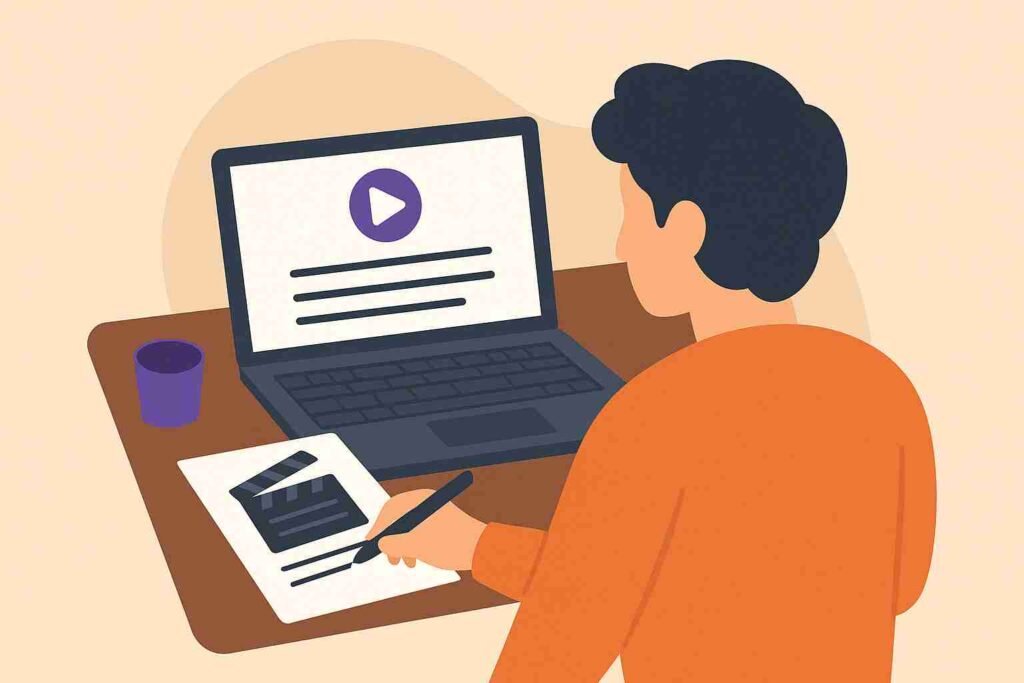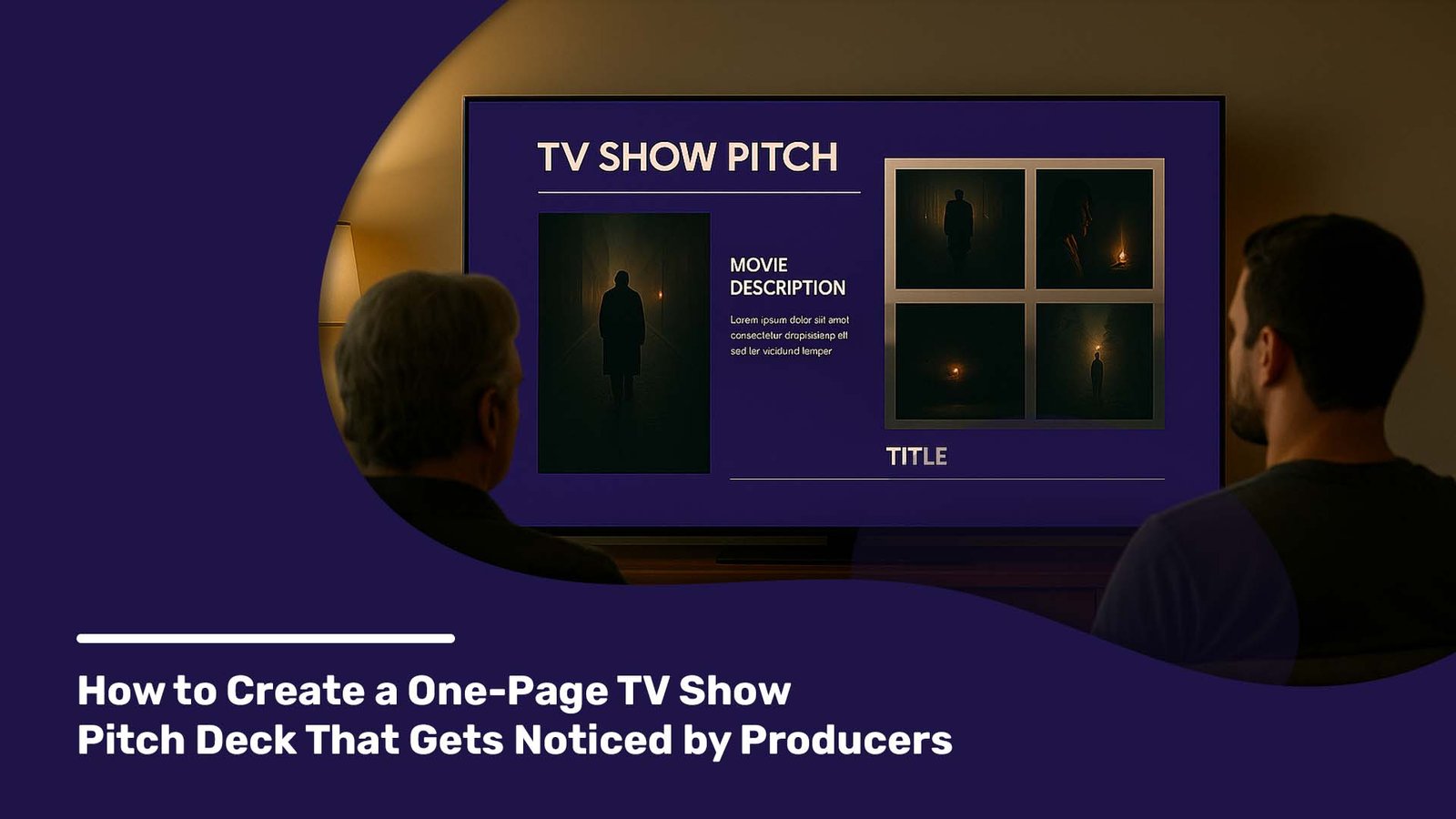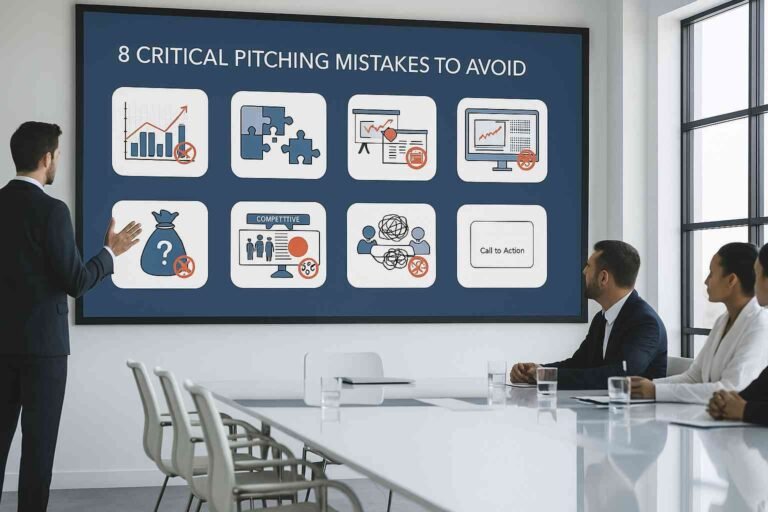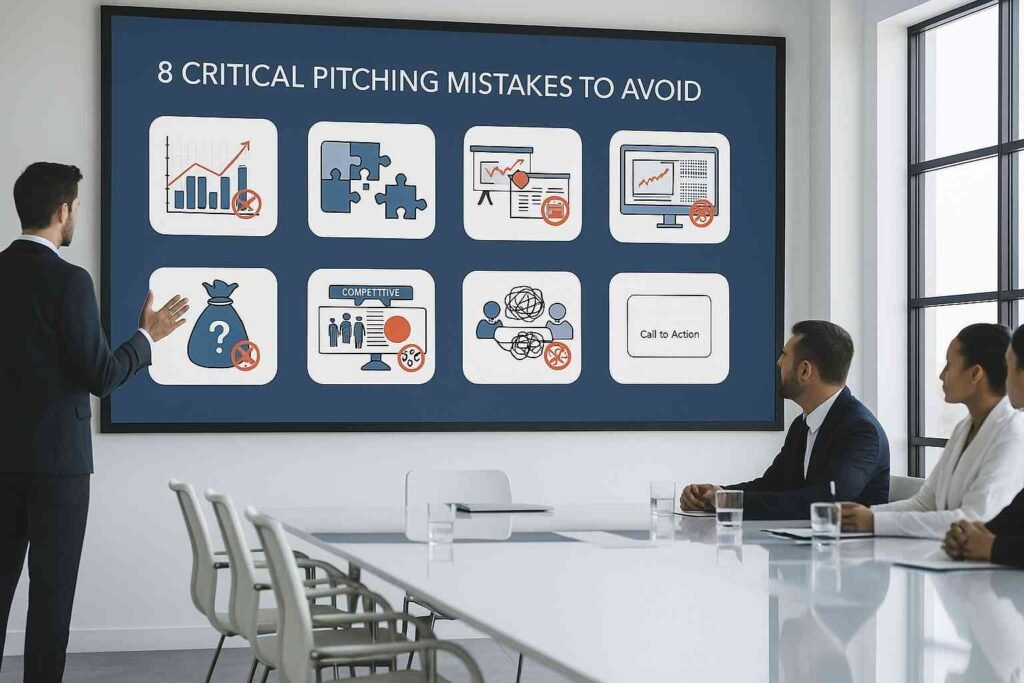Introduction
If you have a great idea for a TV show and want to share it with a producer or streaming platform, you need to present it in a simple and strong way. Producers don’t have time to read long scripts. They want to understand your idea in just one quick look.
That’s why a one-page pitch deck is so useful.
It shows what your show is about, who it’s for, and why it’s worth making — all in a single page.
Let’s learn how to make this one-page pitch perfect!
What Is a One-Page TV Show Pitch Deck?
A one-page TV pitch deck is a single-page document that explains your show idea. It includes everything important — like the title, characters, and the story — in a short and clear format.

It’s like a small poster that gives a big picture of your show.
It helps producers:
- Understand the concept fast
- Decide if they are interested
- Share it with others easily
👉 A good one-page pitch deck tells your story without needing a long explanation.
Why Keep It One Page?
A one-page pitch is better than a long one for many reasons. Producers are busy. They may not read long presentations, but they will look at one neat page.
Here’s why one page works best:
- 📌 Easy to read and quick to understand
- 📤 Can be emailed or shared without effort
- 👀 Grabs attention without extra noise
- 🧠 Shows you understand your own story well
What Should a One-Page TV Pitch Deck Include?
Let’s now look at what you need to include in your pitch deck and how to explain it in a simple way.
1. Show Title and Tagline
This is the name of your TV show and one catchy line that explains the feel or idea of the show.

The title should be short, strong, and easy to remember.
The tagline should make the producer say, “That sounds interesting!”
Example:
- Title: Behind the Silence
- Tagline: A small town hides a big secret — and one girl hears everything.
Tips:
- ✅ Keep it short and punchy
- ✅ Use simple words
- ✅ Make the tagline give a hint of the story
2. Logline
This is one or two sentences that explain the main story of the show.

Think of it like the back cover of a book — it should say who the story is about, what happens, and why it’s exciting.
Example:
A shy teenager finds out he can time travel, but only 3 minutes into the past — and only once a day.
Tips:
- ✅ Include the main character
- ✅ Say what the problem or goal is
- ✅ Add one twist or hook to make it special
3. Genre and Format
This part tells the producer what kind of show it is and how it will be made.

Genre means the type of story: comedy, drama, mystery, horror, sci-fi, romance, etc.
Format means how long and how many episodes.
Example:
- Genre: Drama + Mystery
- Format: 10 episodes, 30 minutes each
Tips:
- ✅ Be clear and direct
- ✅ Avoid using too many genres
- ✅ Mention if it’s a series, limited series, or just one season
4. Target Audience
This tells who the show is for — what age group or type of viewer would enjoy it.
Knowing the audience helps producers decide where and how to show your content.

Example:
- For people aged 16–30 who enjoy smart mystery shows like “Wednesday” and “You”
Tips:
- ✅ Choose one main group
- ✅ Mention a few similar shows they watch
- ✅ Avoid saying “everyone” — be specific
5. Tone and Mood
This explains how the show feels. Is it funny? Dark? Fast-paced? Emotional?
You can also add colors or visuals to give the reader an idea of the style.

Example:
- Tone: Dark humor, quirky, suspenseful
Tips:
- ✅ Use 2 or 3 simple words
- ✅ Think about how viewers will feel when they watch it
- ✅ Keep it consistent with your logline and genre
6. Main Characters
This part shows who your story is about. You don’t need to write long bios. Just give 1–2 lines about each important character.

Tell us what makes them unique or interesting.
Example:
- Maya – A 22-year-old who runs a fake detective agency from her mom’s basement.
- Theo – A silent boy with a camera who sees everything but says nothing.
Tips:
- ✅ Focus on their personality
- ✅ Say what their main role is
- ✅ Include 2 or 3 characters only
7. Pilot Episode or Season Story
This section explains what happens in the first episode or across the first season.
You don’t have to tell the whole story. Just give the main idea and leave some mystery.
Example:
- In the first episode, a missing person is found alive — but he doesn’t remember where he’s been. The town changes overnight.
Tips:
- ✅ Focus on the hook
- ✅ Keep it short and clear
- ✅ Mention the twist or turning point
8. Why Now?
This is your chance to explain why this show is important or relevant today.
Think about social trends, news topics, or emotions people are feeling right now.
Example:
- As more young people struggle with identity and anxiety, this show explores those issues through a fun and creative story.
Tips:
- ✅ Connect your show to real-world topics
- ✅ Show how your story fits the present time
- ✅ Keep it personal and true
9. Creator’s Note (Optional)
This is an extra part where you can share why you created this story. It shows your personal connection.
It’s optional, but it adds heart.
Example:
- This idea came from my childhood growing up in a quiet fishing town — where not everything was as quiet as it seemed.
Tips:
- ✅ Use just 1 or 2 lines
- ✅ Be honest
- ✅ Keep it short and simple
Want to explore more comprehensive formats? Check out the must-have slides in a film pitch deck.
Design Tips for One-Page TV Show Pitch Deck
Now that you have all the content, it’s time to make it look neat.
Here’s how:
- ✅ Use clear headings for each section
- ✅ Keep space between blocks
- ✅ Use 1 or 2 colors only
- ✅ Choose clean and readable fonts
- ✅ Add 1 or 2 images that match the mood
🎨 If design feels overwhelming or you’re on a tight schedule, partnering with a pitch deck service can be a smart move.
Final Thoughts
Making a one-page pitch deck may sound difficult, but once you break it into parts, it becomes easy and fun.
Just remember:
- Keep it short
- Keep it clear
- Show your idea with confidence
If your story is good — and your pitch is strong — producers will want to know more.
💬 FAQs
| Question | Answer |
| What is a TV pitch deck? | It’s a one-page summary of your TV show idea that tells the story, tone, and characters. |
| How long should my pitch deck be? | Just one page is best. It keeps your idea focused and easy to read. |
| Do I need to include images? | It’s optional, but a few visuals can help set the mood. |
| Can I make this myself? | Yes. But you can also get help from a design agency to make it look better. |
| Do I have to be a professional writer? | No. Anyone with a good idea and clear story can create a pitch deck. |









